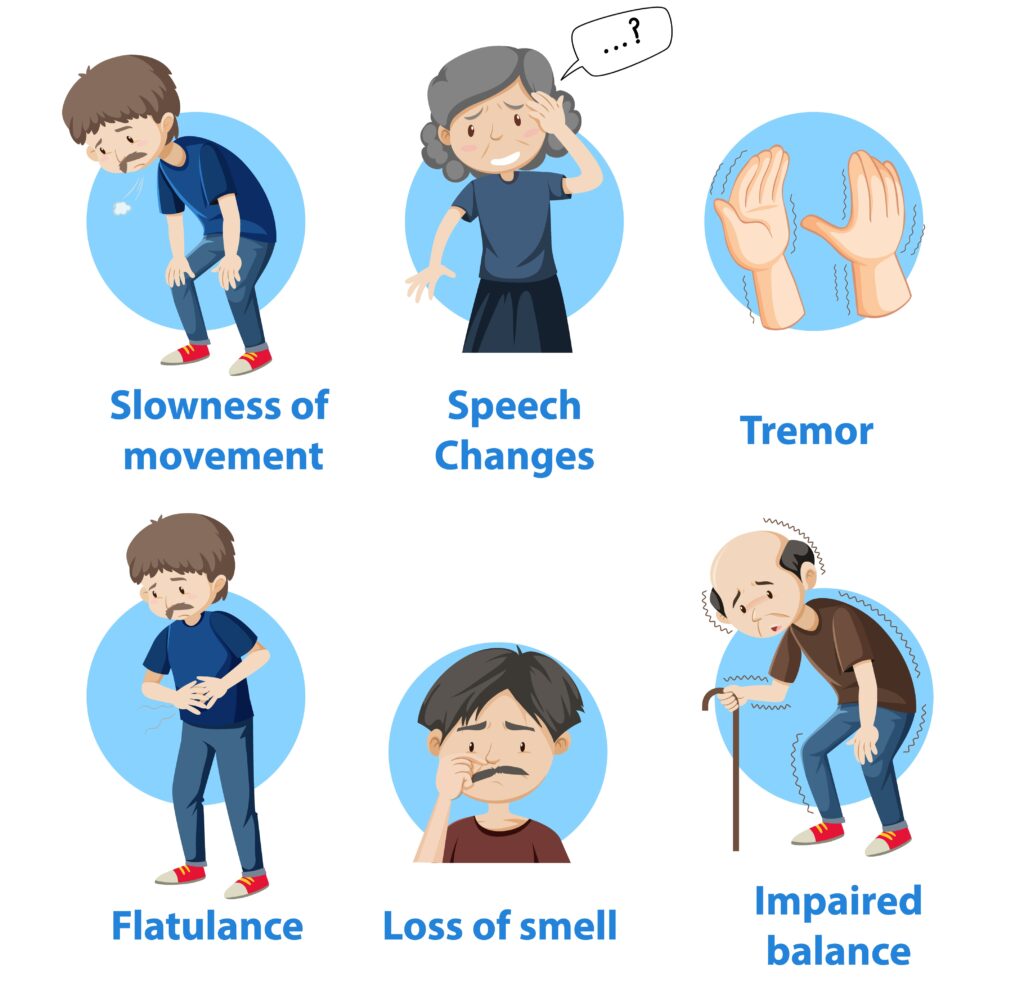
Table of Contents
Overview
Strokes are among the leading causes of long-term disability and can have life-altering consequences. Recognizing the early warning signs and taking immediate action is essential to prevent severe complications. This guide covers what you need to know about the types of strokes, key symptoms to watch for, and preventative measures to reduce your risk.
What Is a Stroke? Understanding the Different Types
A stroke occurs when blood flow to a part of the brain is interrupted, depriving brain cells of oxygen and causing them to die quickly. There are three main types of strokes:
- Ischemic Stroke: This is the most common type, caused by a blockage in an artery that supplies blood to the brain, often due to a blood clot.
- Hemorrhagic Stroke: This stroke is caused by bleeding in or around the brain, often due to a ruptured artery or blood vessel. It can be more dangerous and is generally linked to high blood pressure or aneurysms.
- Transient Ischemic Attack (TIA): Also known as a “mini-stroke,” a TIA is a temporary reduction in blood flow to the brain. Although it doesn’t cause permanent damage, it serves as an important warning sign for a possible future stroke.
Each type of stroke has different causes and risk factors, but common contributors include high blood pressure, heart disease, diabetes, smoking, obesity, and a sedentary lifestyle
Related : Top Foods High in Iron
Recognizing the Signs of a Stroke
Stroke symptoms often appear suddenly, and the acronym FAST can help you quickly recognize and respond:
- F – Face Drooping: One side of the face may droop or feel numb. Ask the person to smile—if their smile is uneven, this is a potential warning sign.
- A – Arm Weakness: Check if one arm is weak or numb by asking the person to raise both arms. If one arm drifts down, it may indicate a stroke.
- S – Speech Difficulty: A person having a stroke may have slurred speech or find it difficult to speak or understand others. Ask them to repeat a simple sentence to check.
T – Time to Call Emergency Services: If any of these signs are present, call emergency services immediately. Acting fast is critical to minimize brain damage.
Other Stroke Symptoms to Be Aware Of
While FAST is an effective method for identifying strokes, other symptoms can also signal a stroke:
- Sudden confusion or trouble understanding speech or surroundings.
- Severe, sudden headache with no known cause, especially if it’s intense and sudden.
- Dizziness, loss of balance, or trouble walking.
- Sudden vision problems in one or both eyes, such as blurriness or complete vision loss.
If you notice any of these symptoms in yourself or others, it’s crucial to seek medical attention immediately. Early intervention can dramatically improve recovery chances and reduce the risk of long-term disability
Related : The Best Brain Foods to Boost Concentration and Mental Clarity
Immediate Steps to Take in a Stroke Emergency
When you suspect someone is having a stroke, follow these steps to provide effective assistance:
- Call Emergency Services Immediately: Time is critical in stroke treatment, so don’t delay. Prompt medical attention can significantly affect the outcome.
- Record the Time of Symptom Onset: Medical professionals need this information to determine the best course of treatment, as certain interventions are only effective within specific time windows.
- Keep the Person Comfortable and Calm: If they are conscious, help them remain calm and seated. Avoid giving them food or drink, as swallowing may be impaired
Related : Health Benefits of Green Tea
Preventing Strokes
While some risk factors like age, family history, or previous stroke cannot be changed, many lifestyle adjustments can help reduce your chances of experiencing a stroke:
- Control Blood Pressure: High blood pressure is a significant stroke risk factor. Regularly monitor your blood pressure and, if needed, take medications as prescribed to keep it within a healthy range.
- Manage Diabetes: Diabetes can increase stroke risk, so it’s essential to manage blood sugar levels through diet, exercise, and medications if required.
- Adopt a Heart-Healthy Diet: Eating a diet rich in fruits, vegetables, whole grains, lean proteins, and low in saturated and trans fats can promote cardiovascular health.
- Exercise Regularly: Physical activity helps maintain a healthy weight, lowers blood pressure, and reduces stress, which are all factors that contribute to lower stroke risk.
- Quit Smoking and Limit Alcohol Consumption: Smoking damages blood vessels and increases clotting risk, while excessive alcohol raises blood pressure. Quitting smoking and moderating alcohol intake can lower your risk
The Takeaway
Understanding the warning signs of a stroke and knowing how to respond can be life-saving. Rapid intervention minimizes brain damage and increases the chances of full recovery. By adopting a healthy lifestyle, staying vigilant for early signs, and acting fast when needed, you can protect yourself and others from the devastating effects of a stroke
Frequently Asked Questions
What are the main types of strokes?
There are three primary types of strokes: ischemic stroke, caused by a blockage in a blood vessel supplying the brain; hemorrhagic stroke, which involves bleeding in or around the brain; and transient ischemic attack (TIA), a temporary reduction in blood flow to the brain, also known as a “mini-stroke.”
How can I recognize the early warning signs of a stroke?
The acronym FAST helps identify common stroke signs: Face drooping, Arm weakness, Speech difficulty, and Time to call emergency services. Other signs include sudden confusion, severe headache, dizziness, and vision problems.
What should I do if I suspect someone is having a stroke?
Call emergency services immediately. Note the time when symptoms started, keep the person calm, and avoid giving them food or drink, as swallowing may be affected.
How can high blood pressure contribute to stroke risk?
High blood pressure puts extra strain on blood vessels, making them more likely to clog or rupture, which can lead to a stroke. Keeping blood pressure within a healthy range is one of the most effective ways to lower stroke risk
Is a transient ischemic attack (TIA) as serious as a full stroke?
While a TIA doesn’t cause permanent damage, it’s a significant warning sign that a full stroke could occur. Seeking medical attention after a TIA is important to reduce future stroke risk.
What lifestyle changes can help reduce the risk of a stroke?
Managing blood pressure, maintaining a healthy weight, eating a balanced diet, exercising regularly, avoiding smoking, and limiting alcohol intake can all help lower the risk of stroke











